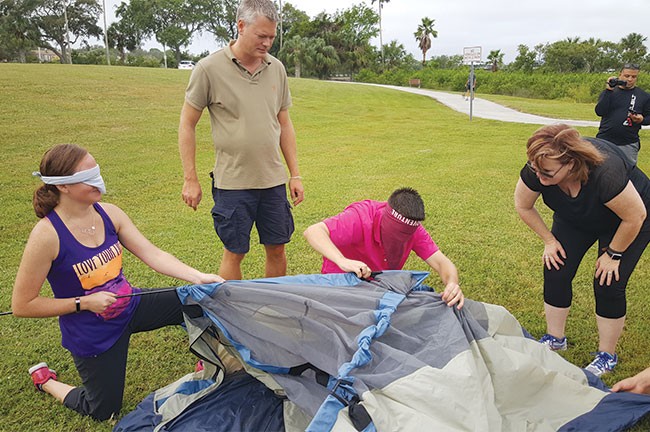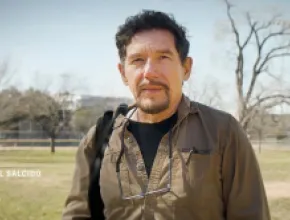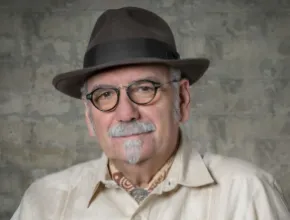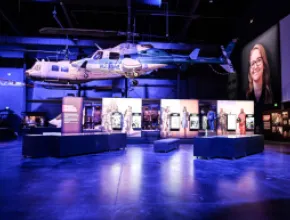Come for the beaches, stay for the catfish and hush puppies.
Northwest Florida may be famed for its emerald waters and sugar-white sands, but much of the state’s Panhandle looks and sounds like the Old South, with dense canopy roads, graceful homes tucked amid stately oaks and friendly folk who define the concept of Southern hospitality.
“You experience Southern charm from the first moment of your meeting,” says Sherry Rushing, travel industry sales director for the Emerald Coast CVB. “Everyone says ‘hello’ or ‘see y’all later,’ and grits for breakfast are a must.”
For visitors who thought the South stopped at the Florida state line, it can be a surprise to discover “moonlight and magnolias” in the Sunshine State.
“People from the Northeast and our emerging markets like Chicago have no idea that Northwest Florida has so much of that Southern culture and flavor,” says Cricket Johnson, sales coordinator for Visit South Walton, home of picturesque beach communities and an agricultural north that borders Alabama.
Southern Attraction
The state’s Southern roots reach back to the Confederacy, and Northwest Florida saw some serious action during the Civil War—commemorated at 19th century forts in Pensacola—while a more genteel vision of the South lives on in the rolling countryside surrounding the capital city of Tallahassee, where scores of graceful plantation homes and estates preside over the landscape in a loop of about a hundred miles, including the nearby towns of Havana and Monticello.
“It’s the largest collection of antebellum plantations in the country, around 70,” says Gary Stogner, senior marketing director for Visit Tallahassee, pointing to Goodwood Museum & Gardens in particular, which dates back to 1840 and is close to the downtown area.
Boasting original furnishings and some of the oldest fresco ceilings in Florida, the antebellum mansion-turned-museum also welcomes group events with a variety of facilities, including a carriage house conference center.
Another antebellum home, the Brokaw-McDougall House, located in Tallahassee’s downtown Calhoun Street National Register Historic District, is a Southern charmer whose formal gardens house a variety of camellias—some said to be more than a hundred years old—while the house itself offers two 800-square-foot rooms that accommodate up to 150 for group functions.
“So many of our venues are tied to the South and history,” Stogner notes, adding that “a group could take a walking tour of downtown Tallahassee and see the Southern architecture, with the heavy use of brick, as well as the vegetation that’s common here but not elsewhere in Florida. It’s pretty dramatic in the spring, with the azaleas and dogwood blooming, things you just don’t see south of Ocala.”
Azaleas also bloom at Eden Gardens State Park in Santa Rosa Beach, where the 19th century Wesley House recalls the grandeur of the Old South with white columns, a wrap-around porch and ornamental gardens complete with reflecting pools and statuary. In addition to a pavilion and designated outdoor areas for group events, the park also hosts the annual School of the Soldier Civil War reenactment, which includes artillery demonstrations, drills and skirmishes.
“It doesn’t get much more Southern than that,” declares Johnson of Visit South Walton.
Military buffs would agree, once they visit Fort Pickens, the largest of four forts built to defend Pensacola Bay and its navy yard. Pickens is also one of only four forts in the South that was never occupied by Confederate forces during the Civil War. In fact, Pensacola itself was only part of the Confederacy for just over a year, says Lynne Robertson, chief curator of West Florida Historic Preservation Inc. and Historic Pensacola Village, home to one of Florida’s oldest churches, as well as museums and houses with period decor reflecting a variety of eras, including Victorian.
“The experience here was a little different because we were part of Spanish territory, there were free blacks living here, and the land was not good for plantations,” she says. “It’s very Southern, but not in the way that everyone knows.”
Groups can delve into the city’s 450-year history at the T.T. Wentworth, Jr. Florida State Museum, located in Historic Pensacola Village, where other heritage sites are also available for events and receptions, including the 1832 Old Christ Church, Fountain Park overlooking Pensacola Bay, Barkley House—one of the city’s oldest homes—and the Museum of Commerce, which re-creates a streetscape from early-1900s downtown Pensacola. PageBreak
Farm & Fish
But in Northwest Florida, history doesn’t stay in a museum; Southern traditions are alive and well in the region’s agricultural heartland, something groups will discover on annual October farm tours organized and sponsored by Tallahassee-based New Leaf Market. They’ll tour working dairies, ranches, orchards and gardens, navigate corn mazes, learn the ins and outs of raised bed gardening, and sample fresh produce, home-baked goodies, artisan cheese, honey and preserves.
North of Pensacola, a true Southern experience awaits at Steve’s Farm in Walnut Hill, where groups can browse the local produce, including sweet corn, melons, butterbeans and peas, or drop a line in one of the farm’s 10-acre lakes.
“We’ve had groups of 80 for catfishing,” says Steve Hiebert, owner of the farm. “Everyone rents poles and bait and we offer catch-and-release options, which many groups appreciate.”
In the coastal city of Destin, the fishing traditions—and fishing lore—go back to the early 1830s when “the world’s luckiest fishing village” was founded on the sandy shores of East Pass.
“Some of the relatives of the first settlers still live here,” says Sherry Rushing of the Emerald Coast CVB. “It’s not unusual to walk along the Destin Harbor and run into one of the ‘old salt’ boat captains telling fish tales of long ago.”
Thanks to its speedy deep-water access, Destin is a favorite destination for serious and recreational anglers alike, and group fishing charters abound. Meanwhile, people come from all over for one of the South’s signature dishes: fresh Gulf seafood paired with coleslaw and hush puppies.
Down-Home Dining
In the Florida Keys, many restaurants vie for the title of “best Key lime pie.” in Northwest Florida, it’s all about grits, and Panama City Beach has staked its claim.
“We have grits that will rival any in the South, and many of our restaurants have grits in some form,” says Susan Estler, vice president of marketing for the Panama City Beach CVB, noting places like Boon Docks, whose fresh seafood menu includes cheese grits and fried pickles, Boatyard, home of smoked gouda grits, and Mike’s Cafe and Oyster Bar, which also boasts Southern favorites like fried green tomatoes and greens flavored with bacon and ham hocks.
“We have brilliant chefs in Panama City Beach, and many have that Southern flair,” Estler says.
Local cuisine is also in the spotlight during events like PCB’s annual Lobster Festival & Tournament, drawing thousands of divers and lobster fans from all over the Southeast each September, and South Walton’s Wine & Food Festival, which includes seminars, celebrity guests, tastings and even a Nashville Songwriters Showcase.
“Socializing is key, and our events are a big part of that,” says Johnson of Visit South Walton. “Growing up in the South, you learn the importance of family and friends.”






